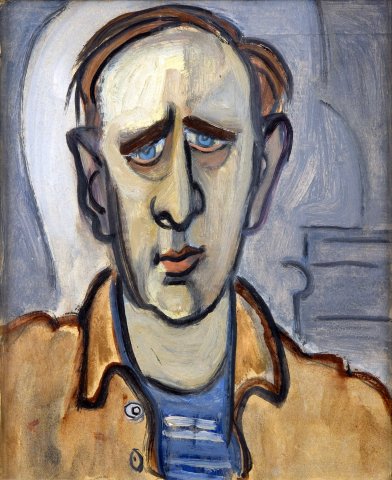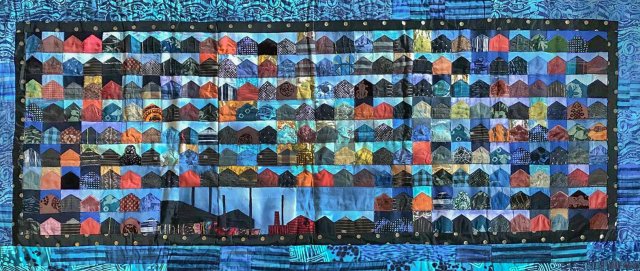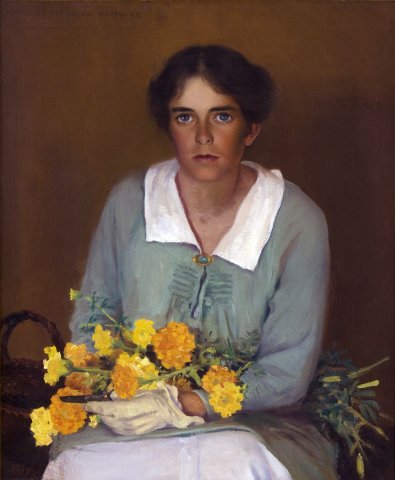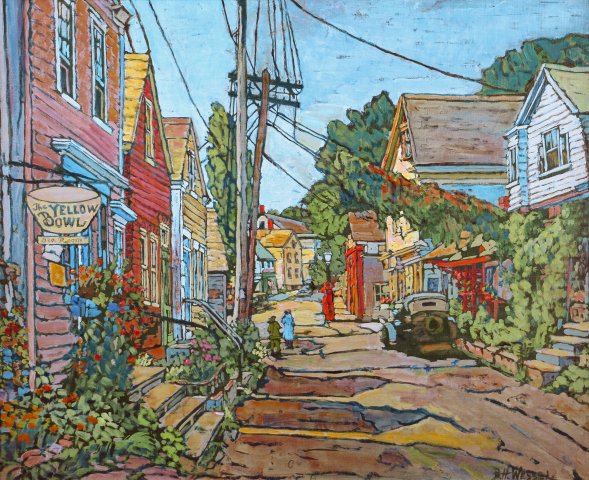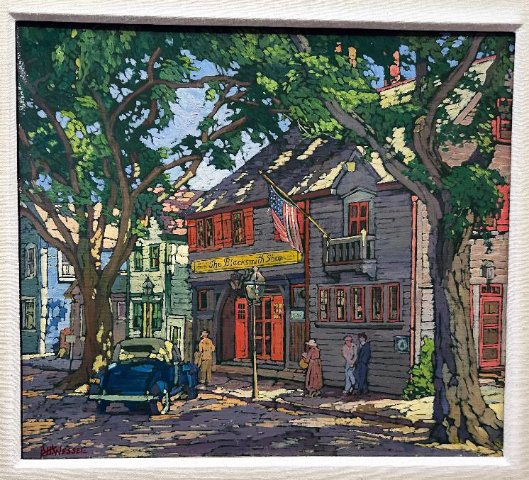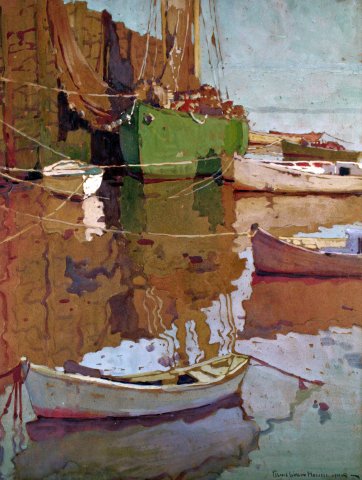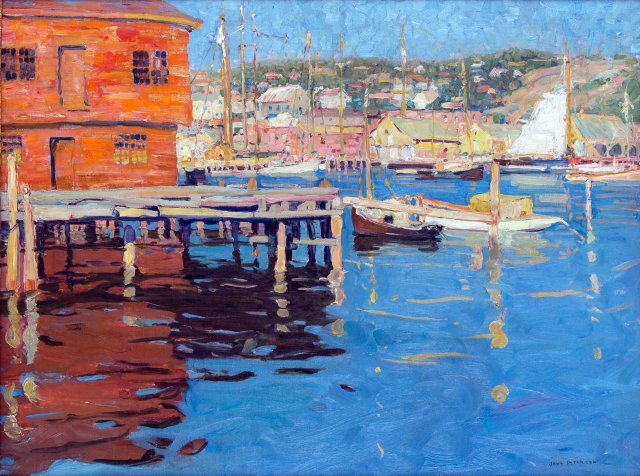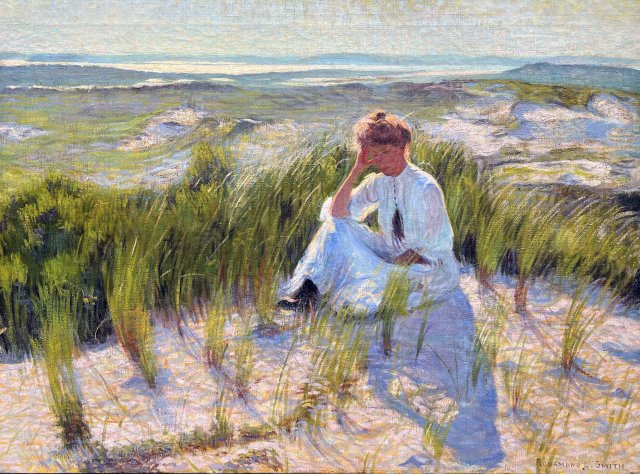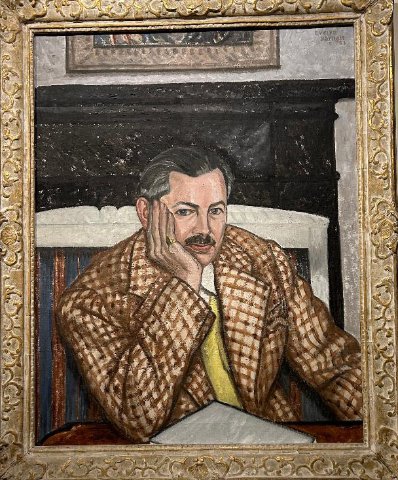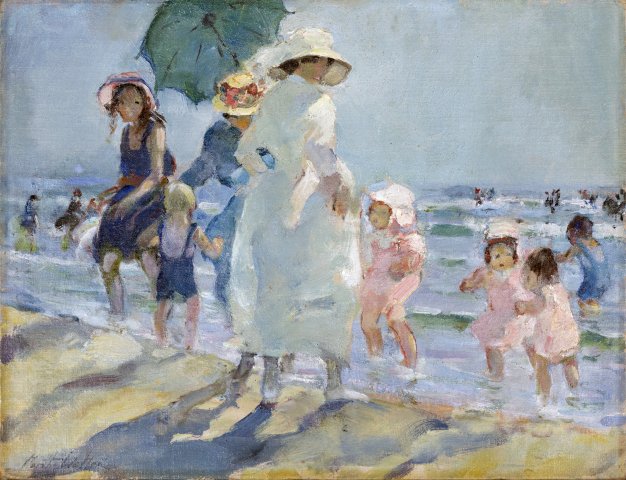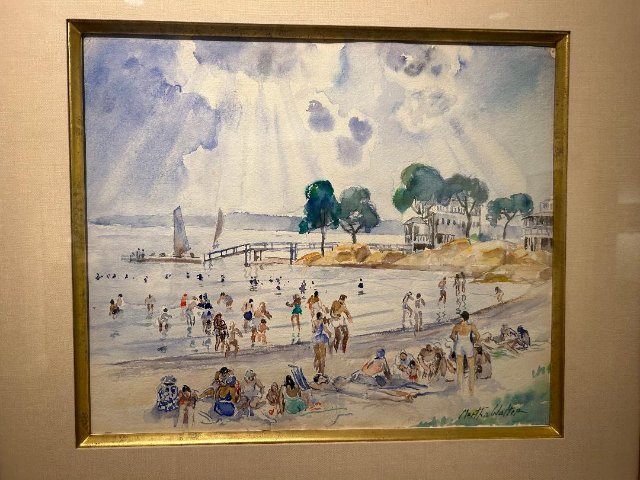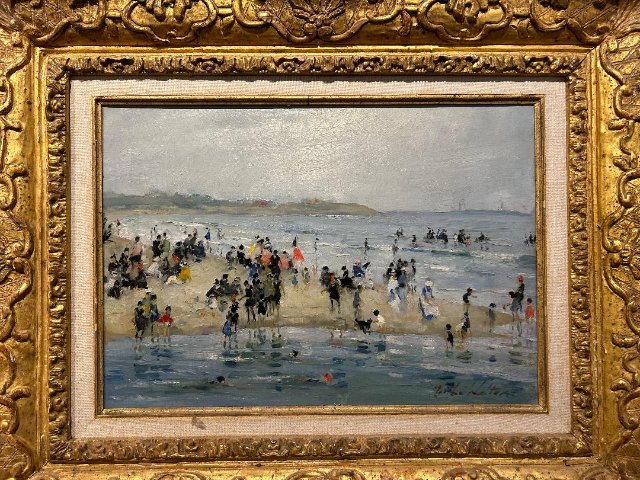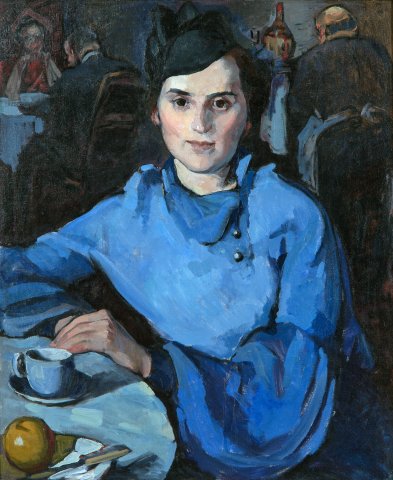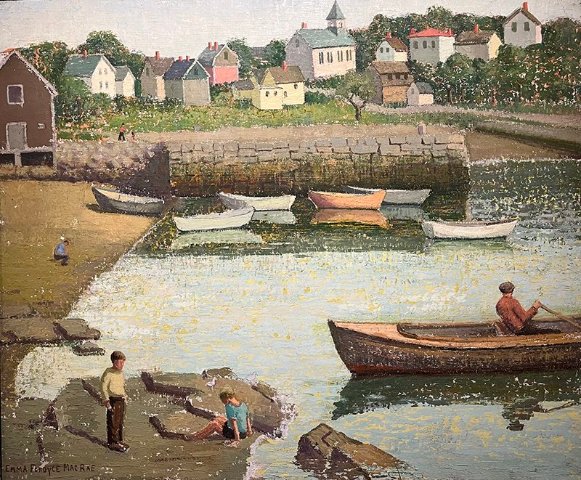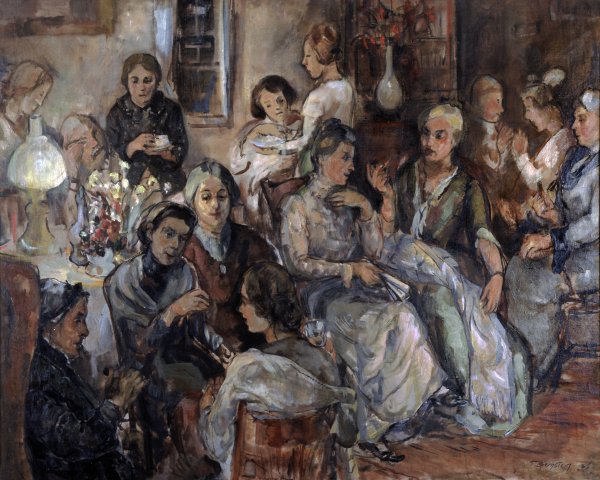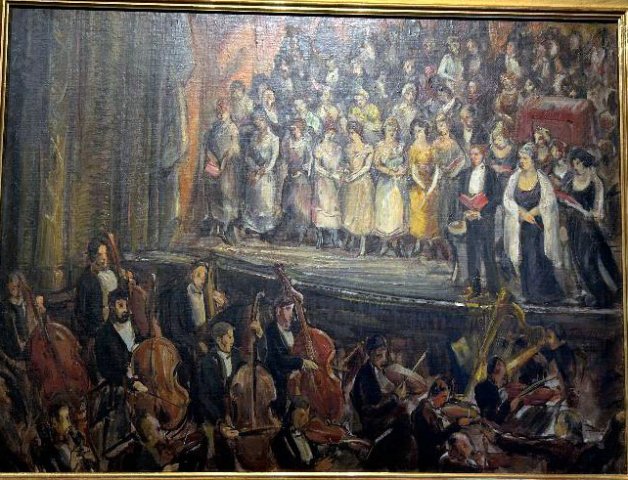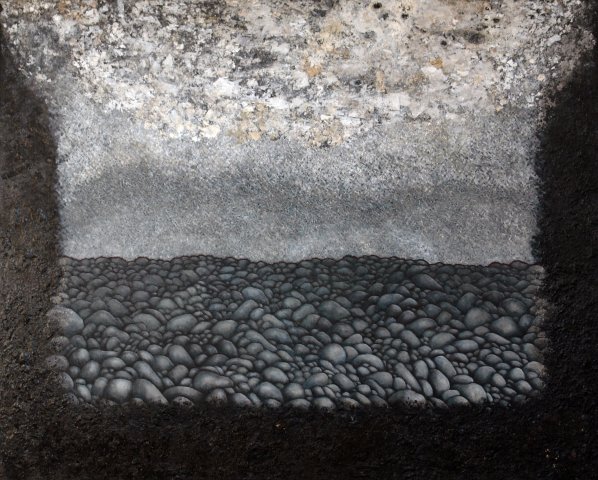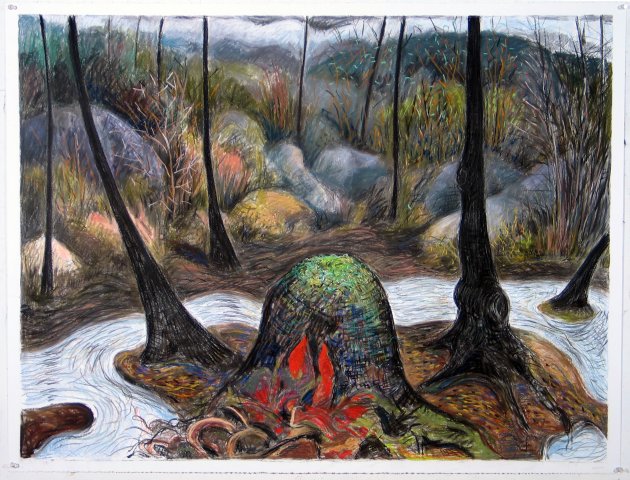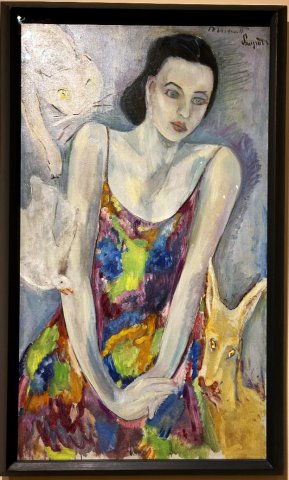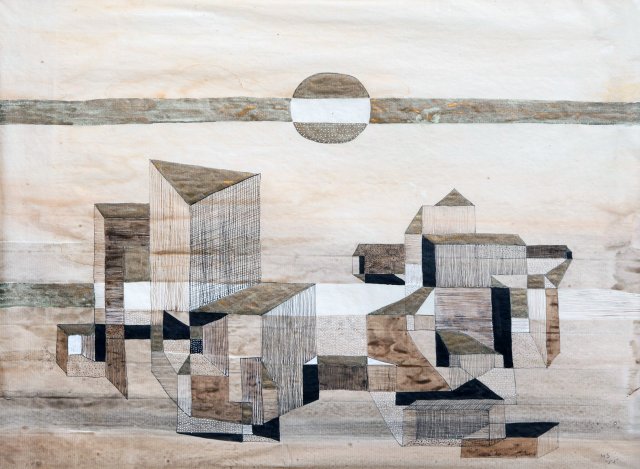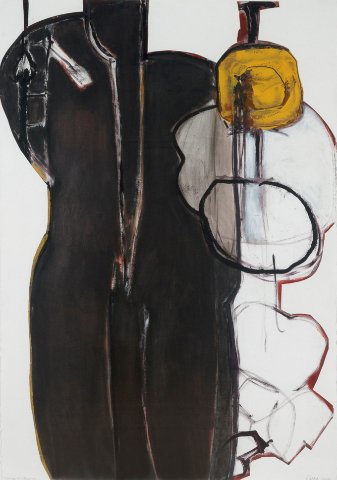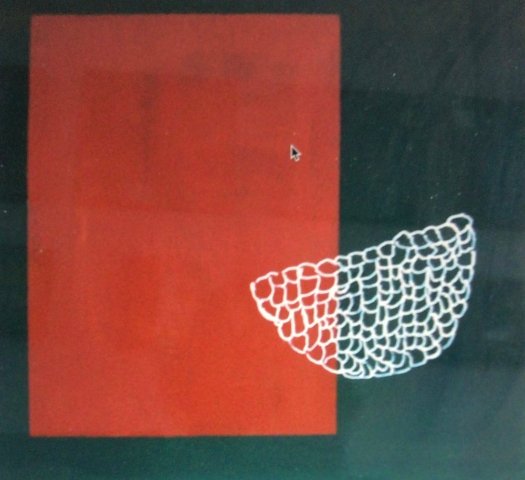Women Artists on Cape Ann: 1870-1970
Cape Ann Museum
By: Charles Giuliano - Aug 30, 2024
Women Artists on Cape Ann: 1870-1970
Cape Ann Museum
Curated by Martha Oaks
27 Pleasant Street, Gloucester, MA
July 13, 2024 — Sept. 29, 2024
It was with great anticipation that I visited Women Artists on Cape Ann: 1870-1970 which is on view at the Cape Ann Museum through September 29. The historic overview has been curated by Martha Oaks from the museum’s permanent collection, that of Janet and William Ellery James, and from private collections in the region.
In addition to the vintage works there is a second major gallery, as well as hall space, representing highlights from a vibrant and active contemporary community.
Given the daunting task of this undertaking the resultant exhibition falls short of what might and should have been. There are stunning works by obscure artists but too many generic landscapes. The lack of a catalogue and scholarly essay for such an important, timely, and art historically significant project is apathetic and reprehensible. The occasion called for engaging a feminist art historian. It is lazy, unprofessional, and inexcusable that there is no check list of the works exhibited.
It is obvious that the director, Oliver Barker, made an executive decision to cut corners with a cost effective project and minimal commitment of resources. At the very least there might have been a pamphlet handout with essay and check list.
Who are these women artists and why have they been selected? For works that entice our interest there is no information beyond brief wall labels. The lack of curatorial essay, check list, or bibliography leaves no resource for further study.
While it is admirable that the museum has mounted an in-depth view of previously underrepresented women artist we learn virtually nothing about them. It is self evident that a number of these artists are well trained with impressive skills as portrait and figurative painters. How did these women acquire that training? It implies that most of them were women of privilege with funding for study and travel.
To what extent were they professionals who earned their daily bread as artists? While that’s a relevant question for the vintage artists, it is not true for the contemporary women who exhibit and sell their work. That transition of career and professionalism would have been a subject for an art historian. The lack of scholarly research makes this an interesting but essentially one-off effort. It breaks no ground in moving forward with a vital project for further research.
When this show comes down the museum will close for renovation. While there are ambitious plans for a brighter future the museum should be taking care of business in the here and now.
“The growth of the Museum in recent years in particular has been breathtaking,” Oliver Barker said. “The Edward Hopper & Cape Ann show last summer tested us and our capacity to host such a nationally significant exhibition. While we excelled in welcoming an unprecedented number of visitors, we will be able to offer an even better experience for the community in the future through the CAM150 Campaign.” Barker also shared that “…by raising these funds, the Museum will amplify its commitment to access, innovative programming and greater visibility of CAM’s important collections.”
“Barker added: “After decades of growth in collections, membership and programming, it is now time for the Museum to reinvest once again in our facilities. CAM-150 will fuel the institution’s commitment to broaden the Museum’s reach, strengthen our mission, and expand our community relevance. It will protect our valuable collections and allow the Museum to engage more deeply with the people who call this area home. Most importantly, the support secured and still sought for the CAM 150 Campaign will ensure that the distinct history of Cape Ann is shared with generations to come.”
“The CAM-150 Campaign, marks the 150th Anniversary of the Museum’s founding in 1875, and will: Revitalize the Downtown campus with world-class gallery space allowing the Museum to tell the story of Cape Ann’s rich history, culture, and artistic traditions. Create and expand the CAM Green campus to serve as a gateway to Cape Ann for the community as well as a place for collection care, storage and access…
”In looking beyond the re-opening of the Downtown campus in early 2026, the Museum will inaugurate its next major loan exhibition, Avery, Gottlieb & Rothko: A Close-Knit Trio (working title) in summer 2026. This exhibition, to be presented in partnership with Phillips Collection in Washington, D.C., will place special emphasis on the inspiration that all three great American artists, Milton Avery (1885–1965), Mark Rothko (1903–1970), and Adolph Gottlieb (1903–1974) derived from visits to Cape Ann and from each other, an influence that continued to reverberate in the work of their later years.”
While closed for renovation programming will shift to the CAM Green the campus which abuts the traffic circle that connects 128 to Gloucester. The site comprises historic houses as well as a new facility for storage, teaching and exhibitions.
To be sure the current exhibition has wonderful and compelling works as well as ones that have no business being displayed in a museum. It is incumbent on the visitor to find the gems and glide past works that are generic and enervating. In this endeavor scale can be misleading. The largest works are not by default better. There are two egregious examples, vintage and contemporary, that reveal that the opposite is true.
Cecilia Beaux (1855-1942), Victory Bearing Away the Infant Future, 1921, was acquired in 2011 and has been restored. In her day she was an acclaimed artist, but based on this jingoistic work, it is difficult to see just why. Evoking Delacroix, the helmeted goddess stands before a cloud of cannon smoke clutching a babe wrapped in flags. It evokes a soccer ball more than an infant. There are difficult to discern glimpses of combat in the background. Attention is drawn to poorly rendered stubs for feet.
In the contemporary gallery too much wall space has been accorded a strident, garishly colored, poorly executed floral painting by Judy Rotenberg. It is in the museum’s collection. Near it is a quilt by Clara Wainright the scale of which fails to hold our attention. There are rows of shacks with a decorative border.
A caricatured portrait of Marsden Hartley, by Helen Stein (1896-1964) circa 1934, is riveting. We would like to know more about Stein and her interaction with Hartley. There is a small Dogtown painting by her. It was the subject that Hartley painted and suggests his influence on her work.
Two small Rockport paintings by Bessie Hoover Wessel (1889-1973) were a revelation. The 1930s views are executed on paper in a tight, illustrational manner. One depicts the Blacksmith Shop which was a meeting place for artists. In the 1950s it was Rockport’s best restaurant with baked stuffed lobster fired on the forge. The other work is a view of touristy Bear Skin Neck. It would be wonderful to see more of her work.
The self portrait by Margarett Sargent, who was related to John Singer Sargent, is poignant and harrowing. It’s an oddly outsider work with the woman crowded into a narrow space with expressionist pets, a howling dog, cat, and a bird that may be a pigeon. The wall label reveals that the artist was an alcoholic with mental issues.
There are too many ho-hum landscapes but that of Rosamond Smith Bouvé (1876-1948) At Wingaersheek, circa 1908, is charmingly different. She depicted her sister reclining in eel grass. It seems that she was the ancestor of the Smith family from Squam Rock Road in Annisquam. She was an accomplished portrait painter.
As was another native of Annisquam, Margaret Fitzhugh Browne (1884-1972). Her studio overlooked Lobster Cove a short distance from the Annisquam Yacht Club. It stuck me as nervy that she had a place holder for the parking spot. Growing up I saw a lot of her work. Currently, there are several of her painting on permanent view in the Annisquam Village Hall. She is represented here by an engaging portrait of her sister. Browne was a conservative artist who opposed modernism. It was that hostility that drove major artists like Rothko, Hofmann, Avery and Gottlieb from Gloucester.
By contrast, Theresa Bernstein (1890-2002), was not just a modernist but an avowed leftist. She and her husband, William Meyerowitz, rented the famous Red House in East Gloucester which welcomed their renowned New York artist friends. As one of the best known and admired artists in this survey she has more work on view than anyone else. In a corridor with her husband a genre piece of a musical performance is displayed. While somewhat stilted it reminds me of similar work by the ashcan artist, Everett Shinn, whose work she would have known growing up in Philadelphia.
Of the landscape paintings a few were stunning. Jane Peterson (1876-1965) Smith’s Cove is depicted in broad bold strokes and brilliant color. It compares with the astonishing contemporary work of Jeff Weaver. I was similarly moved by the brilliant brushwork of Felice Waldo Howell.
A perennial issue for the development of a vibrant community of contemporary artists on Cape Ann is the lack of professional criticism. There are, at best, puff pieces in local media. That’s why the recent review of the exhibition in Cape Ann Cosmos, by Peter Littelfield, was so significant. Renowned for his career in theatre and opera this was his first effort, urged on by pressing need, to write about the fine arts. He is collaborating with Gabrielle Barzaghi and a work will be show on CAM Green next summer.
He wrote in part “In the hall outside the main gallery is a selection of work done after 1970 by artists no longer living: Nell Blaine (1922-1996), Erma Wheeler (1915-2005), Judith Goetemann (1926-2019), Mary Rhinelander McCarl (1940-2021) and others. Across the hall, side by side with the older work, is a gallery full of art by women artists who are alive and doing important work now: Susan Erony, Ruth Mordecai. Gabrielle Barzaghi, Juni Van Dyke, Elynn Kroger, Dawn Southworth, Celia Eldridge, Clara Wainwright, Elaine Wing, Judy Rotenberg, Debbie Clarke, Pat Lowry Collins, and Diane KW.”
Other than Nell Blaine I was unfamiliar with the small works displayed in the corridor. That served as a threshold introduction to the large ancillary gallery. Instead of leaning in one could step back to absorb a number of large works.
Of particular interest was a diptych by Barzaghi, charcoal and pastel on paper, Stump 2012, and Winter, 2009, acrylic and burnt paper on canvas by Susan Erony. They are artists worthy of national attention, which arguably, should be a mandate of Cape Ann Museum. While they put resources into major shows like Hopper and the upcoming Avery, Gottlieb and Rothko, they put little or no effort into promoting these “local” shows. That, more than anything, defines why, despite ambitious plans for expansion, Cape Ann Museum languishes as under the radar and provincial.
A commonality of Barzagi and Erony is that they are rooted in nature as a spiritual metaphor. That connects them to the iconic Dogtown paintings of Marsden Hartley.
For Barzaghi that’s particularly direct as she lives in the woods at the edge of historic Dogtown. One feels the earth and atmosphere in her expressionist landscapes.
Recently, we discussed Taoism with Erony which is how I relate to the stillness and power of the reductive and iconic Winter. It’s a work that does not reproduce well. You have to stand before it and absorb the individually rendered, worn, rounded rocks. They form a bed in a trough created from burnt paper with an ominous sky above. It’s a work that evokes meditation and not just contemplation.

